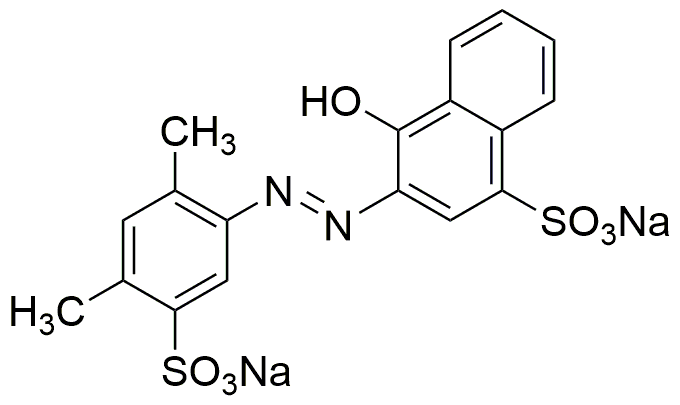Ponceau SX is widely utilized in research focused on:
- Food Industry: Commonly used as a food colorant, it enhances the visual appeal of products like sauces and confectionery, making them more attractive to consumers.
- Biotechnology: Acts as a pH indicator in various biochemical assays, helping researchers monitor reactions effectively and ensuring accurate results.
- Textile Industry: Employed in dyeing processes, it provides vibrant colors to fabrics, which is essential for fashion and home textiles.
- Pharmaceuticals: Used in the formulation of medications, it helps in identifying and distinguishing between different drugs, ensuring patient safety.
- Laboratory Research: Serves as a staining agent in microscopy, allowing scientists to visualize cellular structures and processes, which is crucial for biological studies.
General Information
Properties
Safety and Regulations
Applications
Ponceau SX is widely utilized in research focused on:
- Food Industry: Commonly used as a food colorant, it enhances the visual appeal of products like sauces and confectionery, making them more attractive to consumers.
- Biotechnology: Acts as a pH indicator in various biochemical assays, helping researchers monitor reactions effectively and ensuring accurate results.
- Textile Industry: Employed in dyeing processes, it provides vibrant colors to fabrics, which is essential for fashion and home textiles.
- Pharmaceuticals: Used in the formulation of medications, it helps in identifying and distinguishing between different drugs, ensuring patient safety.
- Laboratory Research: Serves as a staining agent in microscopy, allowing scientists to visualize cellular structures and processes, which is crucial for biological studies.
Documents
Safety Data Sheets (SDS)
The SDS provides comprehensive safety information on handling, storage, and disposal of the product.
Product Specification (PS)
The PS provides a comprehensive breakdown of the product’s properties, including chemical composition, physical state, purity, and storage requirements. It also details acceptable quality ranges and the product's intended applications.
Certificates of Analysis (COA)
Search for Certificates of Analysis (COA) by entering the products Lot Number. Lot and Batch Numbers can be found on a product’s label following the words ‘Lot’ or ‘Batch’.
*Catalog Number
*Lot Number
Certificates Of Origin (COO)
This COO confirms the country where the product was manufactured, and also details the materials and components used in it and whether it is derived from natural, synthetic, or other specific sources. This certificate may be required for customs, trade, and regulatory compliance.
*Catalog Number
*Lot Number
Safety Data Sheets (SDS)
The SDS provides comprehensive safety information on handling, storage, and disposal of the product.
DownloadProduct Specification (PS)
The PS provides a comprehensive breakdown of the product’s properties, including chemical composition, physical state, purity, and storage requirements. It also details acceptable quality ranges and the product's intended applications.
DownloadCertificates of Analysis (COA)
Search for Certificates of Analysis (COA) by entering the products Lot Number. Lot and Batch Numbers can be found on a product’s label following the words ‘Lot’ or ‘Batch’.
*Catalog Number
*Lot Number
Certificates Of Origin (COO)
This COO confirms the country where the product was manufactured, and also details the materials and components used in it and whether it is derived from natural, synthetic, or other specific sources. This certificate may be required for customs, trade, and regulatory compliance.


